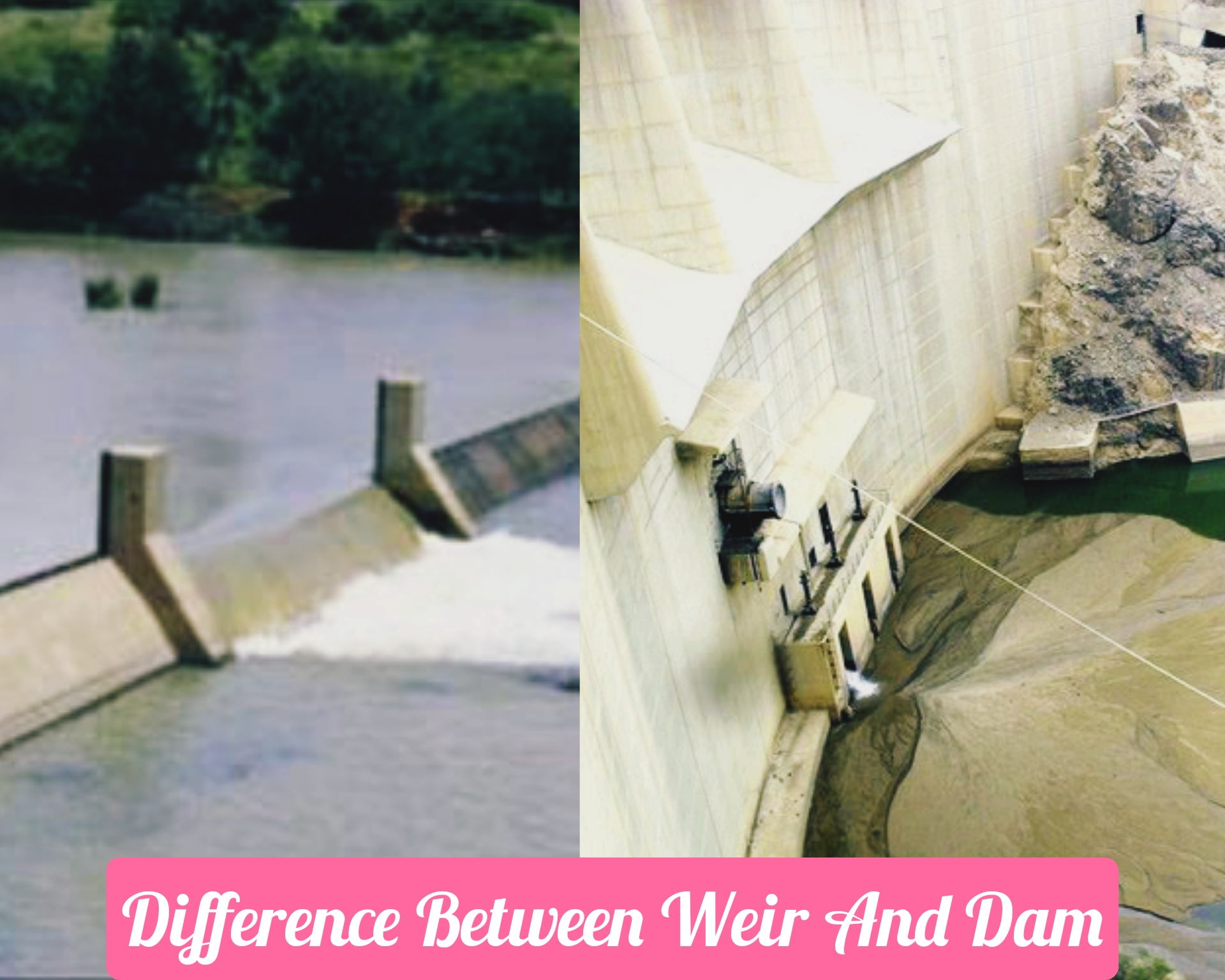Today, I am going to discuss about difference between weir and dam. It is essential for civil and structural engineers to know the difference between weir and dam.
First, let’s get brief idea of dam and weir.
Table of Contents
Dam
A dam is a high concrete wall constructed across a river. Its primary purpose is to impound water behind the wall, creating a reservoir. Dams are often used for power generation, water distribution to areas in need, and drinking water supply in nearby cities.
Weir
A weir is a smaller structure built across a river to control water flow. It usually includes a specially designed opening, such as a rectangle, triangle, or V-shaped opening, which increases the flow of water while creating a rise in water level upstream. Weirs can be used for power generation, creating canals to transport water, and providing drinking water.
Dam Vs Weir: Key Differences
| Aspect | Dam | Weir |
|---|---|---|
| Size | Dams are typically large and imposing structures made of concrete. They can stretch across the river, creating a substantial barrier. | Weirs are comparatively smaller than dams and may not extend completely across the river. |
| Flow Control | Dams primarily control water flow by impounding water behind the wall, regulating its release. | Weirs control water flow by utilizing the specially designed opening, which accelerates the water flow while causing an increase in water level upstream. |
| Hydraulic Force | Dams generally create less forceful hydraulic effects in the water due to their larger size and design. | Weirs can create forceful hydraulic waves, which can be hazardous and even fatal due to their smaller size and the openings that accelerate water flow. |
| Water Head Increase | Dams result in an increased water head or level behind the structure due to the impounded water. | Weirs also cause an increase in water head upstream, facilitating various purposes such as power generation and water distribution. |
| Crest Design | Dams have various designs depending on their location and purpose, often involving thick concrete walls to withstand water pressure. | Weirs can have different crest designs, such as thin crested (with metal plates) or broad crested (with timber or concrete), depending on the material used. |
| Water Usage | Dams serve multiple functions, including power generation, water storage, irrigation, and drinking water supply. | Weirs are used for power generation, creating canals to transfer water to areas in need, and supplying drinking water. However, they also carry a risk due to forceful hydraulic waves. |
You might also like: Difference Between Weir And Barrage
Closing Thought
A dam is a large structure built across a river to create a reservoir by stopping the flow of water. It is mainly used to store water for various purposes like irrigation, hydroelectric power generation and drinking water supply. On the other hand, a weir is a small barrier built across a river to control the water level and flow. This allows some water to flow over its top, thereby maintaining a constant level above the river, whereas dams usually store large amounts of water behind them. Weirs are often used for water management and flood control in urban areas.

